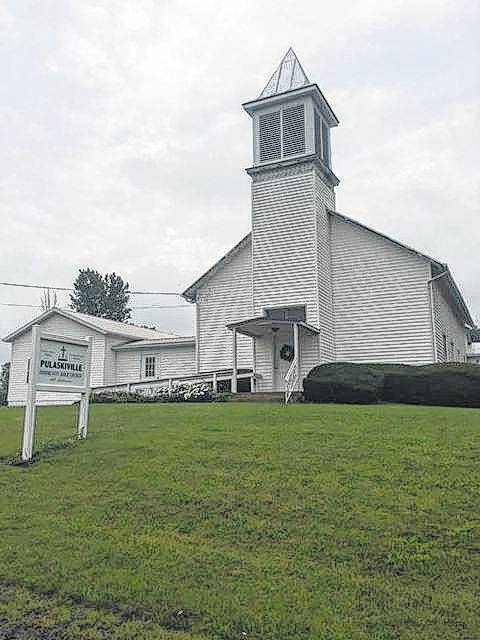PULASKIVILLE — The name is somewhat amusing, but has historical significance. The village’s history is equally intriguing.
What is left of Pulaskiville sits nearly unnoticed near County Road 98 in Franklin Township in east central Morrow County. Like many communities its size it’s often overlooked out of sight of most residents’ daily travels.
See more photos, go to our online photo gallery.
Historical records say it was organized in 1823 and laid out in 1834. A post office was established there on Dec. 3, 1838, while the town was still part of Knox County. It remained in operation until May 15, 1907.
It was named, at the suggestion of some citizens, for Count Casimir Pulaski, who died in the Revolutionary War’s Battle of Savannah in 1779.
According to accounts, churches were quite prominent. At one time it had Methodist, Episcopal and New School Baptist churches, according to the book, “History of Morrow County, Ohio.”
Described as “a cross road hamlet” with a cluster of about a dozen houses, it was laid out by William Linn and Richard Traux, on land that they owned. The original plat exhibits several streets.
There was a country store that served as the village’s center of activity.
Dr. Eli S. Sylvester settled near Pulaskiville, in 1842, where he practiced for about two decades before engaging in agriculture. Dr. Cook practiced there in 1870, but after several years he abandoned medicine and became a minister of the Christian Church.
The Baptist society was formed about 1830 by Elders James and George of Chester. After preaching at the cabins of Stevens and Campbell, they used the school house to hold services until 1840.
It was at that point that “the whole neighborhood assisted them in building a frame structure for a house of worship.”
In 1874 a new church was erected at a cost of $2,200.
Today the stark white Pulaskiville Community Bible Church — it advertises Sunday school and morning worship service — is about all that remains, along with the memories of those who were born and raised there.
A drive through the rolling hills last week reveals a couple of small horse farms and a mixture of older and new homes along County Roads 98 and 109. At one small home a couple tended a garden, the middle-aged man attentive to his cigarette and reluctant to talk.
Others weren’t, like Dave Ghenco, who recalled living the first 18 years of his life in Pulaskiville, before leaving in 1970.
“When I was young, our old barn used to be the school house. I would find many pieces of slate where it was located long after it was taken down. In our old garage we used to have the post office mail boxes that my dad would keep odds and ends in. While growing up, there used to be a general store on the northeast corner that I would go buy bottles of soda made by the Topps brand,” Ghenco said.
Janelle Renwick also grew up there.
“There were two churches, but one has been tore down. Back in the day, I believe there was a gas pump in the middle of the intersection. There was also a general store and a post office, which was my house.”
Joan Jagger is another with ties to Pulaskiville.
“My great great grandfather, Marten Gates, is buried there. He was a sheep farmer, I was told,” she said.
Gates wasn’t alone in working the land, as a number of prominent farms dotted the landscape in the mid to late 1800s. Names such as Denton Graham, George Gates, James Hardin and Milton Grove can be found in the historical account.
A merchant named Richard Holly Graham is noted as well. It is said he purchased a stock of goods from Milton Hart in 1876. Graham also was postmaster for a period of time.
Samuel James is listed as being “among the worthy self-made men of Franklin.” He was a carpenter by trade.
It is interesting to note that Pulaskiville had telephone service as early as 1910.
By the mid 1930s Henry Hair operated a grocery store. There also was a blacksmith shop, dry goods store, a saloon and a Mission Band Holiest Church.
The town pump was located in the center of the crossroads.
Other early settlements in the township included Florida Grove, Center Corners (also known as Franklin Corners) and Waterford.
Today it exists in name only, long omitted from the U.S. Census rolls. But a century ago Pulaskiville thrived.








